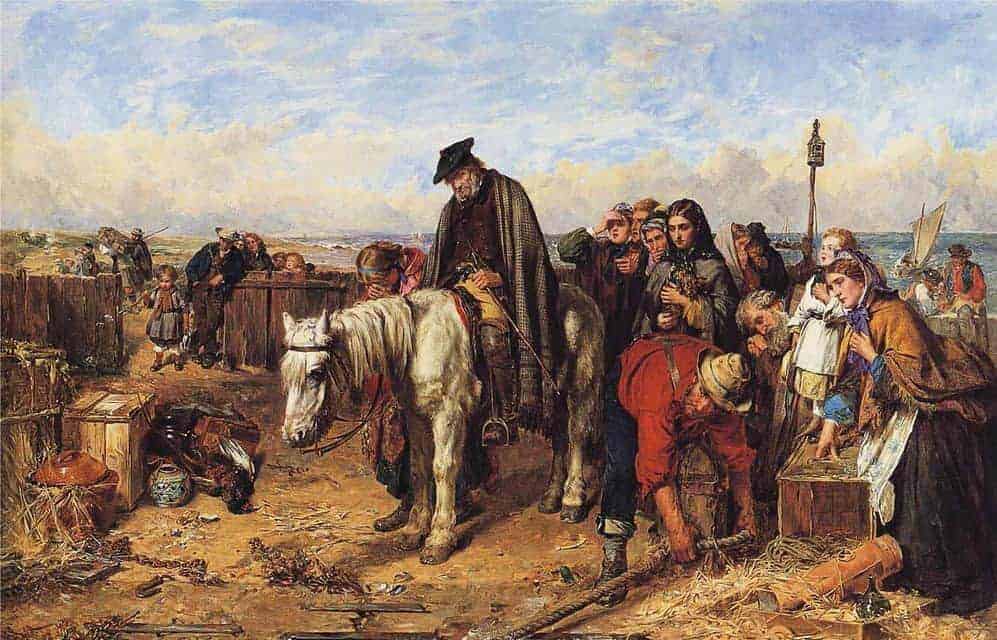An old Scottish joke describes God’s creation of Scotland. ‘Scotland will have spectacular mountains, imposing glens, and stunning lochs. Plump salmon will swim through the rivers, thousands of deer will run wild through the hills and supply you with delicious venison, and the finest whiskey in the world will be distilled in Scotland. The nation will also provide some of the world’s greatest inventions and thinkers,’ God tells the first Scotsman. ‘That all sounds fantastic, but surely there must be something wrong with Scotland?’, returns the suspicious man. ‘Just wait until I tell you about the neighbours,’ replies God.
Today’s vision of Scotland, all shortbread and tartan, is largely the romantic invention of Sir Walter Scott and his Victorian admirers, including Queen Victoria herself. But behind this gentle veneer lie thousands of years of bloody battles, hardships, and oppression, which we should remember today. Although not all of Scotland’s historical misfortunes have been caused by ‘the neighbours’, meaning England, the joke above is certainly accurate about a great proportion of Scotland’s bloodiest tales. In this list, we will learn of battles, great heroes, murders, and conspiracies. You’ll never look at a kilt in the same way again.

Battle of Mons Graupius
Though Julius Caesar failed to conquer Britain in 55-54 BC, the Romans returned to finish the job in 43 AD under the instruction of the Emperor Claudius. Led by Aulus Plautius, the legions soon subdued south eastern England and, after overcoming the odd rebellion such as that of Boudica and the Iceni in 60-61 AD, began to press further north. In 77 AD, Gnaeus Julius Agricola became Governor of Britain, and moved his army into Scotland, then known as Caledonia. In 80 AD Agricola marched his troops as far as the Firth of Tay in central Scotland.
Agricola’s invasion was not welcomed by the locals, who launched guerrilla attacks on the forts he built in Caledonia. A serious confrontation between the two sides was inevitable, and in 83 or 84 AD, it finally came. Our source for the great battle that soon erupted is Agricola’s son in law, the Roman historian Tacitus (c.56-120 AD). It is thus not surprising that Tacitus gives a glowing account of the Governor in his biographical work known as The Agricola: ‘no fort on a site of his choosing was ever taken by storm, ever capitulated, or was ever abandoned’ (22).
According to Tacitus, the Roman Army numbered 8, 000 infantry and 3, 000 cavalry, with unnumbered legionaries waiting in reserve. Modern estimates give the size of the army as 17-30, 000 soldiers in total. The Scottish army outnumbered the Romans, and was mostly located on hilltops ‘in a manner calculated to impress and intimidate its enemy’ (35), and so Agricola took the gamble of spreading his men in a thin line to avoid being attacked from the flanks. The Caledonians were armed with long swords and small shields, with which they parried the missiles launched at them by the invaders.
Unfortunately for the Scots, their long swords were unsuitable for close-range combat, and so when the soldiers on lower ground launched a frontal attack they were mown down by blows from shield bosses and the short Roman gladius sword. Seeing this, the Caledonian army on the hilltops charged, but were intercepted by a cavalry unit, which ‘turned their spirited charge into a disorderly rout’ (37). The fleeing Scottish were overtaken and slain by the cavalry: ‘whole groups, though they had weapons in their hands, fled before inferior numbers’ (37). In total, 360 Romans and 10, 000 Scotsmen were killed.
Despite this one-sided victory, the Romans never did succeed in subduing all of Caledonia. Soon after the Battle of Mons Graupius, Agricola was recalled to Rome, and his unnamed successors seem to have been unable or unwilling to maintain dominance. Most likely, continuing resistance from the Scottish made war unattractive economically and politically. In 122 AD, the Emperor Hadrian ordered defensive walls (limites), to be erected, in order to mark the limit of the Roman Empire and to keep the Scottish out. Hadrian’s Wall ran 80 miles coast-to-coast, and symbolised the ultimate failure of the Caledonian conquest.

